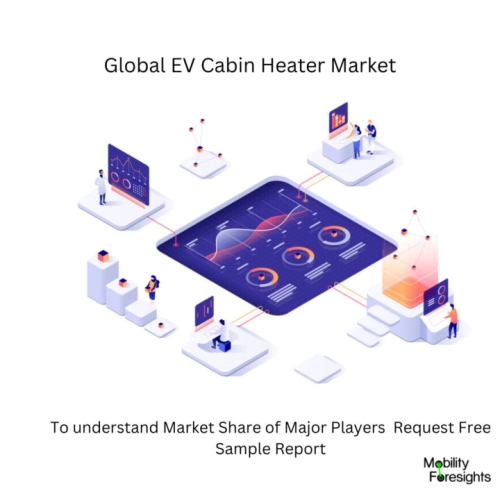
- Get in Touch with Us

Last Updated: Apr 25, 2025 | Study Period: 2024-2030
All current EVs choose to employ a heat pump system. Anyone interested in eco-homes or sustainable development will be familiar with this heating technology. A heat pump functions similarly to an air conditioner and is capable of transporting heat into the cabin at efficiency above 100%.
Warm the cabin with a resistive heating system, in which electricity is passed through a resistive heating element, producing heat that is blown out of the air vents. Many electric vehicles employ a resistive heating technology that requires high-voltage battery electricity to provide cabin heat.
Other EVs may employ a heat pump to divert heat into the cabin, providing resistive heating in freezing temperatures when the heat pump becomes inefficient.

The Global EV Cabin heater market accounted for $XX Billion in 2023 and is anticipated to reach $XX Billion by 2030, registering a CAGR of XX% from 2024 to 2030.
The BorgWarner cabin warmer enhances the driving range of a modern electric vehicle. BorgWarner will provide advanced high-voltage positive temperature coefficient (PTC) cabin heating technology for a new electric vehicle (EV) for a well-known EV manufacturer.
BorgWarner's technology uses less energy while heating the cabin quickly. The lack of waste heat makes it difficult to heat the cabin. BorgWarner's high-voltage cabin heater, which is independent of waste heat, warms the air stream coming from the blower, providing a comfortable and odor-free cabin environment while saving battery power through efficient operation.
With ceramic PTC components as essential design elements, the cabin heater self-regulates to ensure high power heating is available in frigid temperatures, when it is most needed. As the temperature rises and heating demand falls, the energy is automatically reduced.
The cabin heater has a power rating of up to 7 kW, dual-zone functionality for less waste than single-zone solutions, and contributes to practically silent operation of the heating, ventilation, and air conditioning (HVAC) system.
BorgWarner's product line also includes a variety of other HEV and EV technologies, including as high-voltage liquid heaters, eBooster electrically driven compressors, eGearDrive transmissions, and auxiliary thermal coolant pumps..